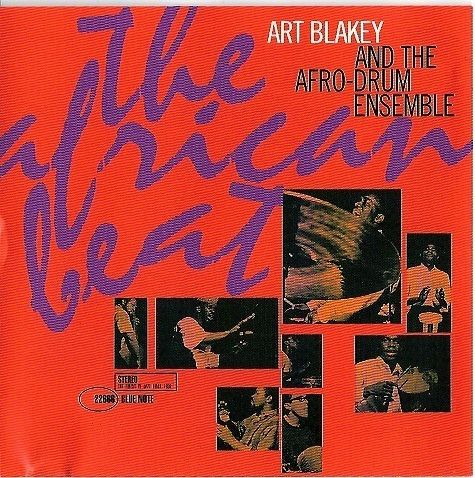- The African Beat
Infobox Album
Name = The African Beat

Type =Album
Artist =Art Blakey
Released = 1962
Recorded =January 24 1962
Genre =Jazz
Length =
Label =Blue Note Records
Producer =Alfred Lion
Reviews =
Last album = ""
(1961)
This album = "The African Beat "
(1961)
Next album = "Three Blind Mice"
(1961)"The African Beat" is an
Art Blakey album onBlue Note Records . He described it as the first opportunity he had to work with drummers fromAfrica ; as a blend of Americanjazz with the traditional rhythms and tonal colors in the percussion of that continent. The album features compositions by African and American musicians, all based on aspects of West African (especially Nigerian) music. [Nat Hentoff . (1999). Original liner notes. In "The African Beat" [CD liner notes] . Hollywood, California: Blue Note.]Track listing
Personnel
In alphabetical order:
*
Ahmed Abdul-Malik — bass
* Chief Bey — double gong,conga , telegraph drum
*Art Blakey — drums,timpani , telegraph drum,gong
* Robert Crowder —Batá drum , conga
* James Ola. Folami — conga
*Curtis Fuller — timpani
* Solomon G. Ilori — vocals,talking drum , pennywhistle
* Montego Joe — corboro drum,log drum , bambara drum, double gong
*Yusef Lateef — cow horn,flute ,tenor saxophone ,mbira ,oboe
* Garvin Masseaux —shekere , African maracas, congaReferences
Wikimedia Foundation. 2010.
